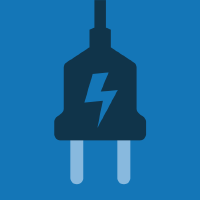Topic Menu
► Topic MenuTopic Editors


Safety of Lithium-Ion Batteries
Topic Information
Dear Colleagues,
The safety of Lithium-Ion batteries (LIBs) has attracted attention worldwide due to the current trends in communication and mobilization brought about by rapidly evolving versions of smartphones, tablets, laptops, and other electronic devices, as well as the continuing increase in the number of electric vehicles. Researchers are encouraged to contribute papers addressing the mechanisms and new tecnologies on solving the safety issues of LIBs. Contributions are encouraged in areas including, but not limited to:
- The safety behavior and mechanism of LIB under mechanical abuse;
- The safety behavior and mechanism of LIB under electrical abuse;
- The safety behavior and mechanism of LIB under thermal abuse;
- The computational models of LIB;
- The safety materials and structures of LIB/LIB module;
- The early warning technologies.
Dr. Binghe Liu
Dr. Lubing Wang
Dr. Yuqi Huang
Dr. Yongjun Pan
Topic Editors
Keywords
- safety behavior
- modeling
- early warning
- abuse
- materials and structures
Participating Journals
| Journal Name | Impact Factor | CiteScore | Launched Year | First Decision (median) | APC |
|---|---|---|---|---|---|

Batteries
|
4.0 | 5.4 | 2015 | 17.7 Days | CHF 2700 |

Electricity
|
- | - | 2020 | 20.3 Days | CHF 1000 |

Electronics
|
2.9 | 4.7 | 2012 | 15.6 Days | CHF 2400 |

Energies
|
3.2 | 5.5 | 2008 | 16.1 Days | CHF 2600 |

Nanoenergy Advances
|
- | - | 2021 | 31 Days | CHF 1000 |

MDPI Topics is cooperating with Preprints.org and has built a direct connection between MDPI journals and Preprints.org. Authors are encouraged to enjoy the benefits by posting a preprint at Preprints.org prior to publication:
- Immediately share your ideas ahead of publication and establish your research priority;
- Protect your idea from being stolen with this time-stamped preprint article;
- Enhance the exposure and impact of your research;
- Receive feedback from your peers in advance;
- Have it indexed in Web of Science (Preprint Citation Index), Google Scholar, Crossref, SHARE, PrePubMed, Scilit and Europe PMC.



